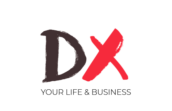The Cost of Ignoring HR
Most small business owners don’t think much about Human Resources.
They focus on sales.
On marketing.
On getting more clients.
More revenue.
More growth.
But HR?
It’s often an afterthought.
Until something breaks.
An employee quits unexpectedly.
A customer complains because someone dropped the ball.
A labor inspection suddenly appears at your door.
Here’s the hard truth I learned the painful way:
> HR is not just paperwork. HR is risk management. HR is profit protection.
In this post, I’ll share real stories from my 20+ years as a business owner — including how poor HR systems once cost me over ₱4 million and nearly shut down my company.
And I’ll show you how to avoid the same mistakes.
Lesson 1: The Onboarding Mistake That Cost Me Thousands
Let’s rewind to my first business.
I hired my first admin at ₱18,000 a month.
She was smart, eager, and ready to help.
But there was one problem…
I gave her zero training.
No onboarding manual.
No clear expectations.
No checklist.
Just vibes.
She tried her best. But after three months, she resigned — burnt out and overwhelmed.
I blamed her at first.
But looking back? It was my fault.
I failed to give her the structure she needed to succeed.
The cost?
₱70,000 in hiring, salary, and lost productivity
And it happened three times in one year
All because I didn’t have an onboarding system.
Lesson 2: The Performance Management Disaster That Nearly Sank My Company
Fast forward to 2007.
I had grown. I had a vision.
So I hired 20 programmers at ₱25,000 each.
Monthly payroll: ₱500,000.
But again, I made a critical error:
❌ No KPIs
❌ No task tracking
❌ No performance reviews
I believed that “great talent manages itself.”
Wrong.
Five months in, I had burned:
₱4M in salaries, rent, admin, and sales team expenses
And we hadn’t launched a single working product.
Clients left. Cash ran out.
I had to let the entire team go.
Not because of bad people — but because of bad systems.
As I learned the hard way:
> “What you don’t measure, you can’t improve.
> What you don’t control, you can’t afford.”
If This Sounds Familiar… I Built Something for You
If you’ve ever:
Lost a great employee because they were confused or overwhelmed
Wasted money on a hire that didn’t perform
Felt like your team was unorganized or out of control…
Then I know how you feel.
That’s why I created the [HR Starter Digital Course](https://dennismhilario.com/hr-starter-digital-course) — a simple, powerful system for entrepreneurs who want to build real structure in their teams.
Inside the course, I walk you through:
✅ How to hire the right people
✅ How to onboard them with clarity
✅ How to set KPIs and track performance
✅ How to comply with Philippine labor laws
✅ How to prepare for DOLE inspections
✅ And how to create an HR system that protects your business
You don’t need to be an HR expert.
You just need a process.
5 Reasons HR is Not a Cost Center — It’s a Profit Driver
Still not convinced? Let’s break it down further.
Here are five critical reasons HR should be your first system, not your last:
1. Turnover Destroys Cash Flow
Hiring and replacing people can cost 50% to 200% of their annual salary.
Retention is cheaper than replacement.
2. Legal Risks Can Shut You Down
Unpaid SSS, PhilHealth, or Pag-IBIG contributions? No contracts?
You could face six-figure penalties or even temporary closure.
3. Unclear Roles Kill Productivity
When people don’t know their job descriptions, they make guesses.
That leads to confusion, mistakes, and project delays.
4. Bad Hires Drain Morale
One underperforming or toxic team member can cause your best people to leave.
That’s a silent cost few entrepreneurs track.
5. Growth Depends on Leadership
If you’re the only one growing, your business stays small.
Training and developing your team is your only path to real scale.
3 Simple Ways to Start Improving HR Today
Don’t get overwhelmed.
You don’t need to implement everything at once.
Here’s how to begin:
✅ Step 1: Write Down Roles and Responsibilities
Even if it’s just you and one other person. Use a Google Doc.
Clarity today becomes freedom tomorrow.
✅ Step 2: Assign KPIs or Core Outputs
One to three key numbers or deliverables per person.
Review them monthly.
✅ Step 3: Create an Onboarding Checklist
It doesn’t have to be fancy.
Just a 5-step guide that tells a new hire what to do in their first week.
Final Thoughts: You Don’t Need to Learn the Hard Way
I built my first business on trial and error.
And I paid the price — in money, stress, and burnout.
You don’t have to.
The difference between a chaotic business and a growing one… is structure.
And that structure starts with HR.
If you’re ready to build systems that protect your profits, your people, and your peace of mind — check out the [HR Starter Digital Course](https://dennismhilario.com/hr-starter-digital-course) today.
You’ll thank yourself later.
